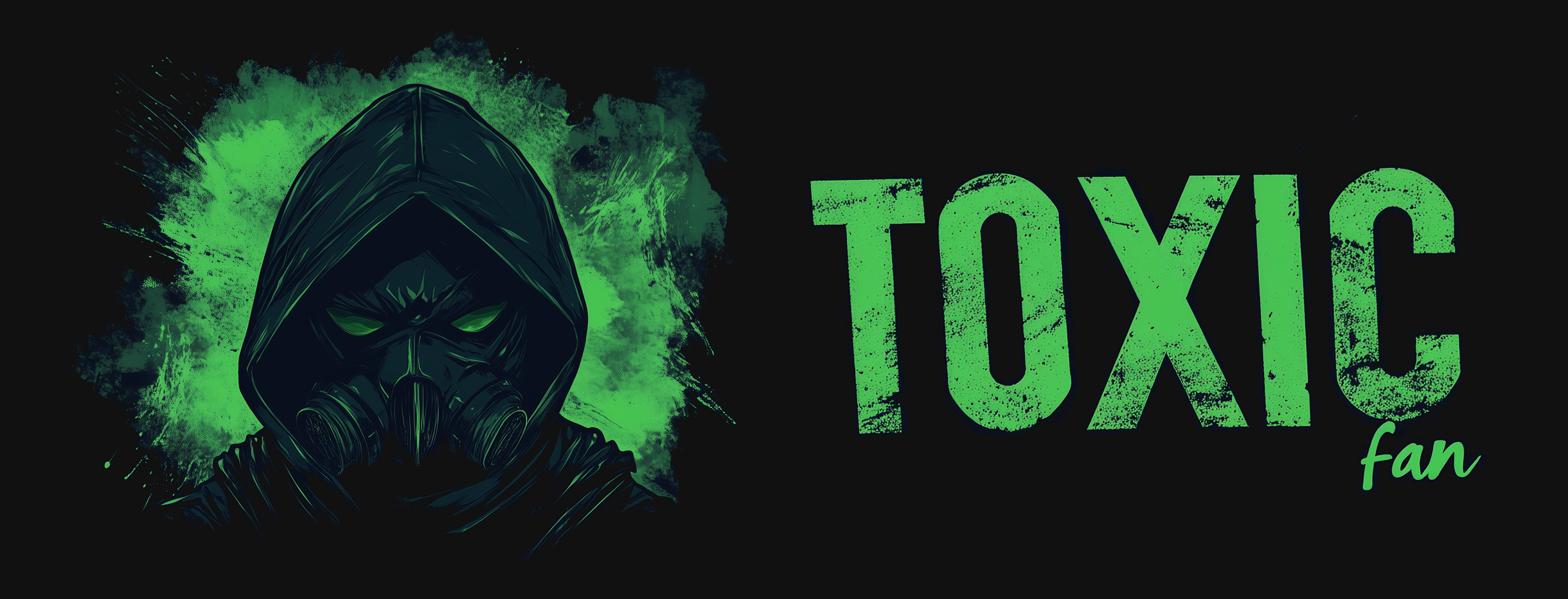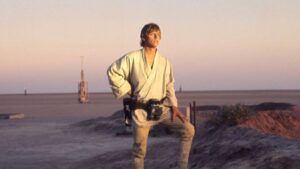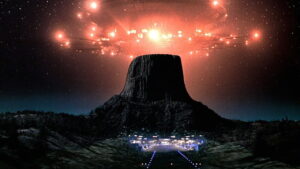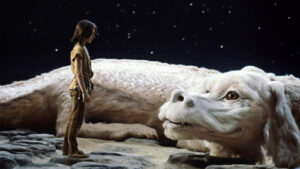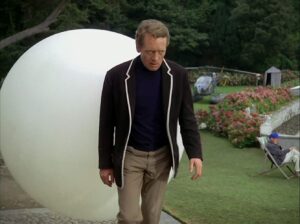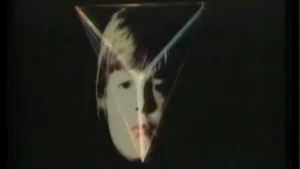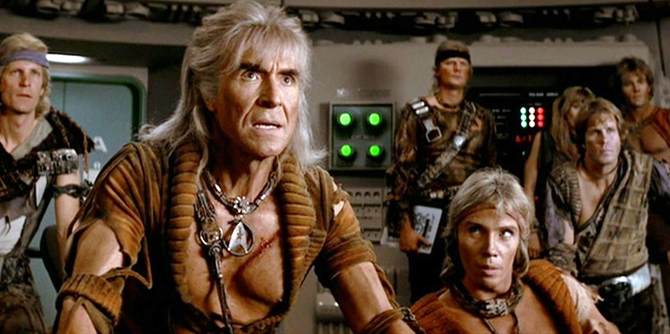
Ricardo Montalbán in 'Star Trek II: The Wrath of Khan.' Photo Credit: CBS Television Studios
In the vast expanse of sci-fi cinema, few sequels have managed to not only surpass their predecessors but also redefine an entire franchise. “Star Trek II: The Wrath of Khan” is that rare gem that boldly went where no Trek had gone before, transforming a cerebral space opera into a swashbuckling adventure that still retains the philosophical core of Gene Roddenberry’s vision.
After the lukewarm reception of “Star Trek: The Motion Picture,” the future of Star Trek on the big screen was as uncertain as a red-shirt’s life expectancy. Enter Nicholas Meyer, a director with no prior Trek experience but a keen eye for storytelling. Meyer’s fresh perspective, combined with a tighter budget that forced creativity over spectacle, resulted in a film that’s more “Horatio Hornblower in space” than “2001: A Space Odyssey.”
At the heart of this interstellar epic is the return of Khan Noonien Singh, played with Shakespearean gravitas by Ricardo Montalbán. First introduced in the original series episode “Space Seed,” Khan’s reappearance is more than just a callback—it’s a masterstroke of continuity that rewards long-time fans while remaining accessible to newcomers.
Montalbán’s performance is nothing short of iconic. His Khan is a perfect foil to William Shatner’s Kirk—both are aging lions, past their prime but no less dangerous. The film explores themes of aging, regret, and the consequences of past actions, giving depth to characters we thought we knew.
While Khan might be the titular antagonist, the true emotional core of the film lies in the relationships between our beloved crew. The triumvirate of Kirk, Spock, and McCoy has never been better realized. Their banter, playful jabs, and unwavering loyalty provide both comic relief and emotional resonance.
The film also isn’t afraid to introduce new blood. The addition of Kirstie Alley as Saavik brings a fresh dynamic to the bridge, her Vulcan logic both a mirror to Spock and a reminder of the generational shift occurring within Starfleet.
For Trekkies, it’s the film that validated their passion. For casual viewers, it’s an entrance into a rich universe. And for filmmakers, it’s a lesson in how to craft a sequel that honors its roots while charting a bold new course.
Meyer’s direction shines brightest in the film’s action sequences. The cat-and-mouse game between the Enterprise and the Reliant in the Mutara Nebula is a masterclass in building tension. By treating starships more like submarine warfare than fighter jets, Meyer creates a sense of weight and consequence to each tactical decision.
The special effects, while dated by today’s standards, serve the story rather than overshadow it. Models and practical effects give a tangible quality to the space battles, something often lost in the CGI spectacles of modern sci-fi.
At its core, “The Wrath of Khan” is a film about confronting the past and facing mortality. Kirk’s struggle with aging and his role in a changing Starfleet mirrors the franchise’s own need to evolve. The Genesis Device, capable of creating life from lifelessness, serves as both a plot device and a powerful metaphor for rebirth and second chances.
The film doesn’t shy away from the consequences of heroism either. The famous “needs of the many” scene and its aftermath pack an emotional punch that resonates far beyond the confines of the genre.
The impact of “The Wrath of Khan” on popular culture cannot be overstated. From Kirk’s iconic “KHAN!” yell to Spock’s sacrifice, the film has provided countless memorable moments that have been referenced, parodied, and homaged for decades.
Moreover, it set a template for what a Star Trek film could be—action-packed yet thoughtful, character-driven yet spectacular. Every subsequent Trek film has had to measure up to the high bar set by “The Wrath of Khan.”
Four decades after its release, “Star Trek II: The Wrath of Khan” remains not just the best Star Trek film, but one of the finest science fiction films ever made. It’s a testament to the enduring power of great storytelling, memorable characters, and themes that transcend the genre.
For Trekkies, it’s the film that validated their passion. For casual viewers, it’s an entrance into a rich universe. And for filmmakers, it’s a lesson in how to craft a sequel that honors its roots while charting a bold new course.
In the words of the inimitable Mr. Spock, “The Wrath of Khan” has been, and always shall be, a friend to science fiction cinema. It doesn’t just live long—it prospers.
